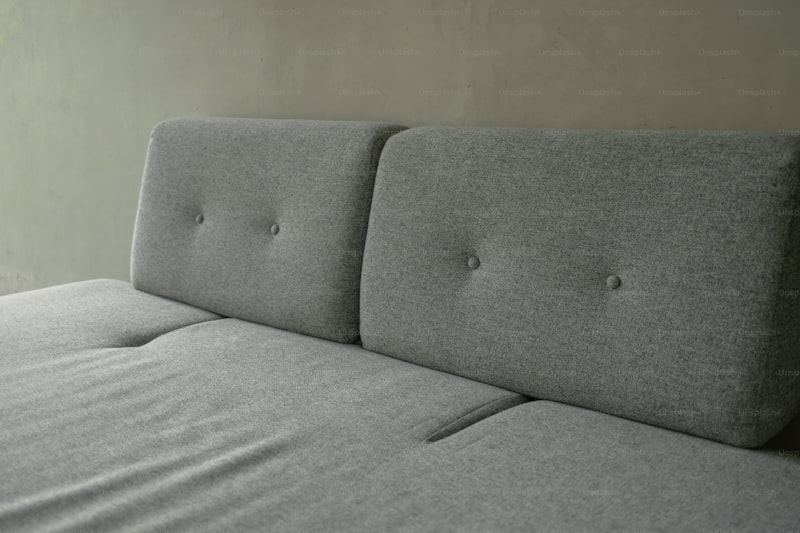Comfort vs. Aesthetics: Finding the Perfect Balance in Modern Design
Understanding Comfort and Aesthetics
When it comes to design, whether in architecture, fashion, or interior spaces, two fundamental principles often collide: comfort and aesthetics. As we explore the realms of comfort vs. aesthetics, it's essential to appreciate how these elements complement each other and to discover ways to achieve harmony between the two.
Defining Comfort and Aesthetics
Comfort refers to the sensory and physical experience of an individual. It encompasses factors like functionality, ergonomic design, and emotional fulfillment. In contrast, aesthetics focuses on beauty, style, and overall visual appeal. While comfort often dictates usability, aesthetics influences perception and personal taste.
The Importance of Comfort
Comfort plays a crucial role in enhancing the quality of life. From the furniture we choose to the environments we inhabit, comfort affects our well-being. Individuals tend to thrive in spaces or outfits that cater to their physical needs. For instance, an ergonomic chair can lead to better posture, reducing back pain and fostering productivity.
The Role of Aesthetics
Aesthetics is equally significant in our daily lives. Beautiful design can evoke emotions, inspire creativity, and even impact mood. A well-designed space can foster a sense of serenity; hence, aesthetics is not merely superficial but can contribute profoundly to the atmosphere of a place.
The Tension Between Comfort and Aesthetics
In the debates of comfort vs. aesthetics, the question arises: which should take precedence? Many individuals find themselves torn between the intrinsic value of beauty and the necessity of comfort. There are instances where these elements clash, such as choosing between a stunning, yet uncomfortable chair and a plain, functional one.
| Scenario | Comfort Level | Aesthetic Level |
| Ergonomic Office Chair | High | Moderate |
| Designer Accent Chair | Low | High |
| Minimalist Sofa | Moderate | High |
| Luxury Recliner | High | Moderate |
Achieving the Perfect Balance
So how can one achieve the optimal balance between comfort and aesthetics? Here are some essential strategies:
1. Prioritize Functionality
Before diving into aesthetics, assess the primary functions of the design. For example, in home interiors, a comfortable seating arrangement is crucial for both living spaces and entertainment areas. Consider lifting aesthetics while ensuring an environment that fosters relaxation and socialization.
2. Select Versatile Designs
Look for designs that blend aesthetics with comfort seamlessly. For example, modular furniture can be both beautiful and functional. Additionally, many brands now prioritize ergonomic designs that also feature elegant lines and contemporary styles.
3. Incorporate Natural Elements
Nature is the epitome of balance. Use natural elements like wood, plants, and natural fabrics as they often provide both aesthetic value and comfort. Biophilic design not only soothes but also pleases the eye.
4. Experiment with Textures
Incorporating various textures can elevate a design's aesthetic while maintaining comfort. Soft fabrics such as velvet or linen in cushions, throws, or upholstery can enhance the tactile experience without compromising beauty.
Real-World Examples: Success Stories
Many well-known designers and architects have successfully blended comfort and aesthetics in their work. For instance, the renowned architect Frank Gehry designed the Walt Disney Concert Hall, an iconic structure that is visually stunning while also accommodating the needs of patrons through thoughtful planning of acoustic and seating arrangements.
Fashion Industry Insights
In fashion, brands like Everlane emphasize comfort without sacrificing style. Their chic yet comfortable clothing designs demonstrate that aesthetics need not be disregarded in the pursuit of comfort.
Common Misconceptions
As we evaluate comfort vs. aesthetics, it's crucial to dispel some myths:
1. Beauty is Pain
The notion that you must choose between feeling good and looking good is outdated. Today’s designs take into account both aspects, reinforcing that you don't have to sacrifice comfort for aesthetics.
2. Aesthetics are Subjective
While different people have varying taste in design, the integration of comfort elevates aesthetics universally. Everyone values comfort, making it an essential component in appealing design.
Future Trends
The future of design stands to revolutionize the comfort vs. aesthetics debate. Here are some anticipated trends:
1. Sustainable Design
As consumers become increasingly aware of environmental issues, the demand for sustainable, comfortable, and aesthetically pleasing designs will rise. Brands will need to innovate to meet these expectations.
2. Smart Home Integration
Smart technology can enhance both comfort and aesthetics. For example, adjustable lighting and climate control can improve comfort while maintaining an elegant ambiance.
3. Personalized Spaces
Future trends will focus on personalization. As people gravitate towards unique designs that reflect their identities, the fusion of comfort and aesthetics will become even more imperative.
Conclusion and Recommendations
In the ongoing discourse of comfort vs. aesthetics, it's essential to recognize that both elements are crucial in design. Striving for a balance is not merely an aesthetic choice but a path towards improved well-being and enhanced experiences. When approaching design decisions, consider practicality, functionality, and personal style. Remember, the ultimate goal is to create spaces or items that are not only visually appealing but also comforting and functional.
In summary, combining comfort and aesthetics is achievable by prioritizing functionality, selecting versatile designs, and being open to new trends. By doing so, we can fully embrace the beauty that surrounds us while ensuring that we feel good in our environments.
